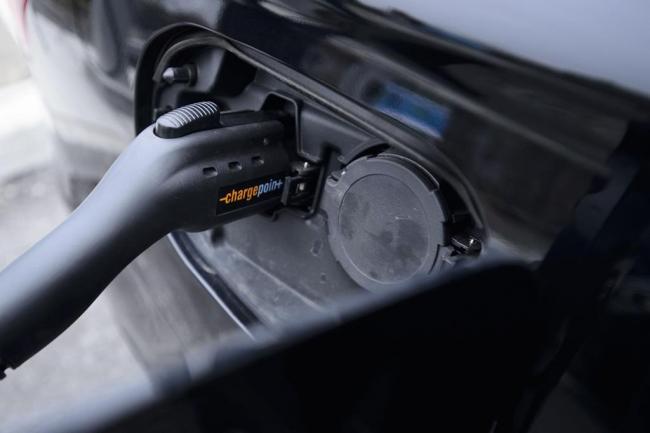Articles Menu

Editor: But see "Lithium, Cobalt, and Rare Earths: the Post-Petroleum Resource Race" https://ecosocialistsvancouver.org/article/lithium-cobalt-and-rare-earth... and Lithium-Ion Battery Production Is Surging, but at What Cost? https://ecosocialistsvancouver.org/article/lithium-ion-battery-productio... and more - search lithium here: https://ecosocialistsvancouver.org/
Dec. 16, 2021
Getting the world to net-zero emissions by 2050 will require the production of critical minerals and metals to grow sixfold over the next 30 years, the International Energy Agency declared in a report earlier this year — and it found the current pace of growth isn't even close.
As electric cars, wind turbines and solar panels explode in popularity, so too does demand for the minerals that make them go. Some are familiar, like nickel, lithium and cobalt, and others are known only to those who memorized the periodic table in high school, like tellurium, bismuth and molybdenum.
Canada, having promised that all the electricity it generates and the new cars that are sold in the country will be zero-emission by 2035, is among the countries driving up demand.
As one of the world's biggest producers of raw metals and minerals, Canada also wants to be filling that demand as a key link in the supply chain for rechargeable batteries.
But even as the federal government pushes a new critical minerals strategy and forges partnerships with allies to develop supply chains that seek to tamp down China's dominance in the field, Canada's position on the world stage is already slipping.
"We're starting to do what we need to do but there's a lot of missing pieces," said Pierre Gratton, president of the Mining Association of Canada.
A year ago, BloombergNEF listed Canada as the fourth most important player in the world's lithium-ion battery supply chain, based on an analysis of raw material production, manufacturing and processing, environmental protections, regulatory regimes and domestic demand.
This fall, the second iteration of that report saw Canada drop to fifth, losing ground in every category.
"We've been viewed sort of as a global leader in the past," said Gratton. "We've lost ground, though."
Canada's ranking slipped because of raw materials and environmental stewardship — the latter a key point in all the sales pitches Canada makes on the world stage.
#Mining the future: Canada's high hopes to become a global critical mineral powerhouse. #CDNPoli #CriticalMinerals #NetZero - Twitter
The problem is, meeting those higher standards comes at a cost, said Gratton. Canada also has to convince buyers that the premium is worth it.
"If you care about climate, and you care about the environment, and if you care about how people are treated, including Indigenous people, then buying from Canada is the right thing to do."
China is the biggest player in the battery supply chain field, both in raw materials and value-added production. Many of the alliances Canada is part of with the United States and Europe are designed in large part to whittle away at China's dominance.
Canada, second in the world in nickel production in 2008, ranked sixth in 2020. It is also sixth for cobalt, and 10th for graphite. Production of all three declined last year.
Those elements, along with lithium and manganese, which Canada could but doesn't currently produce, are the five main components of the lithium-ion batteries that run electric cars.
More than 70 per cent of Canada's nickel is sold to make stainless steel. The nickel that makes batteries is nickel sulphate. Canada does not make it, said Gratton, but it needs to in order to be part of the battery chain.
He said that is being discussed among nickel producers and bandied about as a potential project for Ottawa's strategic infrastructure funding.
But Sarah Petrevan, policy director at Clean Energy Canada, said Canada "needs to have a strategic focus about where we can win."
"We have finite resources, and so you want to make sure that you're putting those finite resources in the place that can have the biggest impact."
Quebec, said Petrevan, has done some of that strategic work of assessing their own supply chains, trying to match what Quebec makes with new manufacturing that meets demand. At least two battery production plants are in the works now in that province.
Canada, however, has not yet done a similar assessment.
Last March, Canada identified the 31 critical minerals it can produce and that at least one of its allies wants, but little has been done with that list since.
Innovation Minister Francois-Philippe Champagne has been dropping broad hints about a major new battery-chain investment coming to Canada, though Petrevan said the dispute with the United States about electric vehicle incentives and trade barriers may be slowing that down.
Last spring's federal budget promised $9.6 million over three years for a battery minerals centre of excellence within the Department of Natural Resources, but nothing has happened yet. Nearly $37 million was also promised for federal research on advancing critical battery mineral processing and refining.
Natural Resources Minister Jonathan Wilkinson is expected to make both a priority early in the new year.
For his part, Gratton said Canada needs to also encourage more production in general. The Liberals made an election promise to double the mineral exploration tax credit and he hopes to see that in the next budget.
"We don't just need to sort of redirect existing production to battery metals, we also need more production," he said. "And you're only going to get that through new discovery."
This report by The Canadian Press was first published Dec. 16, 2021.
[Top photo: A car is charged at a charge station for electric vehicles on Parliament Hill in Ottawa on Wednesday, May 1, 2019. File photo by The Canadian Press/Sean Kilpatrick]